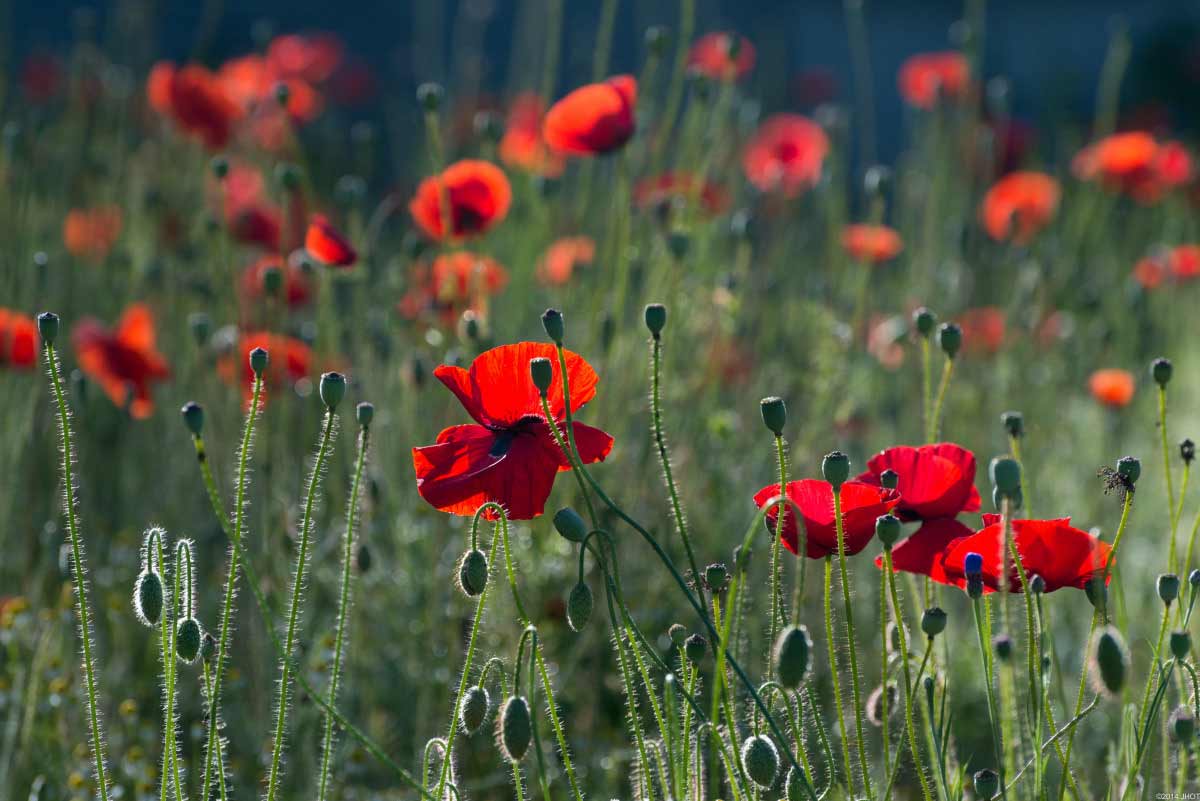What are some of the interesting facts about Honduras, a vibrant country nestled in the heart of Central America, is a land of striking contrasts and rich cultural heritage? Bordered by Guatemala, El Salvador, and Nicaragua, and boasting coastlines along both the Caribbean Sea and the Pacific Ocean, Honduras is a geographical and ecological gem. The nation’s diverse landscapes range from lush rainforests and mountainous highlands to pristine beaches and coral reefs, making it a paradise for nature lovers and adventure seekers alike. With a history deeply influenced by ancient Mayan civilization, colonial legacies, and modern socio-political developments, Honduras offers a unique tapestry of historical and cultural experiences. In this article, I will talk about some interesting facts about Honduras. Keep reading.
Interesting Facts About Honduras: History, Culture, Travel
The capital city, Tegucigalpa, is a bustling urban center that juxtaposes modernity with traditional charm, while smaller towns and rural areas preserve indigenous cultures and practices. Despite facing challenges such as economic inequality and political instability, Honduras remains a country of resilient people and promising potential. Its warm climate, vibrant festivals, and rich biodiversity continue to attract visitors from around the globe, eager to explore its many wonders and uncover the stories woven into its vibrant landscape. Here are some interesting facts about Honduras:
1. Land of Contrasts: Diverse Landscapes of Honduras
Honduras, a country of striking contrasts, presents an astonishingly diverse array of landscapes. From lush rainforests teeming with wildlife to towering mountains that offer breathtaking vistas, the natural beauty of Honduras is truly captivating. The Caribbean beaches along the northern coast are known for their pristine sands and turquoise waters, making them popular destinations for both relaxation and water sports.
Additionally, Honduras is home to the world’s second-largest coral reef barrier system, the Mesoamerican Barrier Reef, which stretches from the Yucatan Peninsula down to the Bay Islands. This reef system supports a rich diversity of marine life and is a magnet for divers and snorkelers from around the globe. Inland, the country’s varied topography includes fertile valleys, highland plateaus, and dense forests that serve as vital habitats for numerous plant and animal species, further underscoring Honduras’ status as a land of remarkable ecological variety.
2. Copán Ruinas: A Mayan Marvel
Copán Ruinas, nestled in the western part of Honduras, stands as a testament to the grandeur of the ancient Mayan civilization. This UNESCO World Heritage Site is renowned for its impressive archaeological remains, which include intricately carved stelae, altars, and temples that tell the story of a sophisticated society. The Great Plaza is a central highlight, featuring an array of beautifully preserved hieroglyphic inscriptions that provide invaluable insights into Mayan history and culture.
The site’s Hieroglyphic Stairway is particularly notable, with over 2,000 individual glyphs, making it the longest known Mayan text. Visitors to Copán Ruinas can explore the Acropolis, which served as the political and ceremonial center of the city, and marvel at the detailed sculptures that adorn the site’s structures. This archaeological wonder not only showcases the architectural and artistic achievements of the Mayans but also offers a glimpse into their complex social and political systems.
3. Tegucigalpa: The Bustling Capital
Tegucigalpa, the vibrant capital city of Honduras, is a bustling metropolis that seamlessly blends historical charm with modern amenities. Situated in a valley surrounded by mountains, the city’s colonial architecture provides a picturesque backdrop to its lively urban environment. Tegucigalpa is home to numerous museums that offer insights into the country’s rich history and culture, including the Museo Nacional de Historia y Antropología Villa Roy and the Museo del Hombre Hondureño.
The city’s markets, such as the Mercado Los Dolores and the Mercado San Isidro, are teeming with activity, offering everything from fresh produce to traditional crafts. The central plaza, Plaza Morazán, is a hub of activity, surrounded by important landmarks such as the Metropolitan Cathedral and the National Congress. Tegucigalpa’s dynamic atmosphere is further enhanced by its diverse culinary scene, which features a mix of traditional Honduran dishes and international cuisine.
4. The Mosquitia Rainforest: A Biodiversity Hotspot
The Mosquitia Rainforest, located in northeastern Honduras, is one of the most remote and biodiverse regions in the country. This vast expanse of tropical rainforest is a haven for wildlife, with numerous species of plants and animals that are found nowhere else on Earth. The region is also home to indigenous communities, such as the Miskito and Pech people, who have lived in harmony with the forest for centuries.
The Mosquitia is characterized by its dense vegetation, winding rivers, and mystical lagoons, such as the Laguna de Caratasca. This rainforest is also a critical habitat for endangered species, including jaguars, tapirs, and harpy eagles. The area’s rich biodiversity and cultural heritage make it an important focus for conservation efforts. Explorers and researchers continue to uncover new species and archaeological sites within the forest, highlighting its significance as both a natural and historical treasure.
5. The Bay Islands: A Paradise Awaits
The Bay Islands, located off the northern coast of Honduras, are a true Caribbean paradise. Comprising the islands of Roatán, Utila, and Guanaja, this archipelago is renowned for its stunning beaches, crystal-clear waters, and vibrant marine life. Roatán, the largest of the islands, is a popular destination for scuba diving and snorkeling, thanks to its proximity to the Mesoamerican Barrier Reef. Divers can explore colorful coral gardens, swim with whale sharks, and discover underwater caves and shipwrecks.
Utila is known for its relaxed atmosphere and is a favored spot for budget travelers and backpackers. It is also considered one of the best places in the world to obtain scuba diving certification. Guanaja, the least developed of the three, offers a more secluded experience with pristine natural beauty and abundant marine life. The Bay Islands’ warm waters and diverse ecosystems make them ideal for water sports, fishing, and simply relaxing on the beach, offering visitors a slice of tropical paradise.
6. Music and Dance: A Blend of Cultures
Honduran music and dance serve as dynamic expressions of the nation’s rich cultural mosaic, reflecting a vibrant blend of indigenous, African, and European influences. This amalgamation is most evident in popular musical genres like Punta, which is renowned for its spirited rhythms and lively dance routines. Originating from the Garifuna people, Punta’s exuberant beat and vigorous dance steps encapsulate the joy and energy of this Afro-Caribbean group.
Garifuna music is further characterized by the prominent use of traditional instruments such as drums and maracas, alongside call-and-response singing that creates a communal and participatory atmosphere. These musical traditions are more than mere entertainment; they are a living testament to the country’s diverse cultural heritage, celebrated passionately in festivals and community gatherings. During these events, locals and visitors alike can witness the seamless blend of ancient customs and modern influences, making Honduran music and dance a unique and enriching experience.
7. The Honduran Lempira: A Symbol of Resistance
The Honduran Lempira, the national currency, holds significant historical and cultural value, named after the legendary Chief Lempira. This prominent Lenca leader became a symbol of resistance by fiercely opposing the Spanish conquerors in the 16th century. Chief Lempira’s legacy is deeply embedded in the national consciousness, embodying the spirit of defiance and the relentless fight for freedom.
By naming the currency after this revered figure, Honduras pays homage to his enduring legacy and the unyielding strength of its people. The Lempira serves as a daily reminder of the country’s resilient past and the collective courage that continues to define its identity. This historical connection also instills a sense of pride among Hondurans, as they carry with them the legacy of their ancestors’ valiant struggles and aspirations for sovereignty.
8. Conservation Efforts: Protecting Natural Heritage
Honduras is actively engaged in conserving its unique ecosystems and biodiversity through the establishment of national parks and protected areas. These conservation initiatives are vital for preserving the country’s rainforests, coral reefs, and diverse wildlife from the looming threats of deforestation and habitat destruction. Noteworthy protected areas, such as the Río Plátano Biosphere Reserve and the Cayos Cochinos Marine Reserve, play critical roles in maintaining ecological balance.
These reserves not only protect a vast array of flora and fauna but also promote sustainable tourism, which supports local economies while encouraging environmental stewardship. By fostering such conservation efforts, Honduras demonstrates a profound commitment to safeguarding its natural heritage for future generations, ensuring that its spectacular landscapes and rich biodiversity remain intact and vibrant.
9. Voluntary Opportunities: Contributing to Development
Honduras presents numerous opportunities for volunteers eager to contribute to its development and environmental conservation efforts. Volunteers can engage in a variety of impactful activities, including reforestation projects, wildlife monitoring, educational programs, and community health initiatives. These volunteer efforts are crucial in supporting local development and fostering sustainable practices.
By participating in these programs, volunteers not only help protect the environment but also gain valuable experiences and insights into Honduran society. Their contributions make a tangible difference in the communities they serve, creating lasting bonds and fostering mutual understanding. This exchange benefits both the volunteers, who acquire new skills and perspectives, and the local communities, which receive support and resources to improve their living conditions and preserve their natural surroundings.
10. The Honduran People: Resilient and Hospitable
The people of Honduras are celebrated for their resilience, warmth, and rich cultural heritage. Despite facing significant economic and social challenges, Hondurans are known for their exceptional hospitality and friendliness, often welcoming visitors with open arms and genuine kindness. This strong sense of community and cultural pride permeates daily life, manifesting in both everyday interactions and vibrant festive celebrations.
Whether through sharing a meal, participating in traditional dances, or engaging in community events, Hondurans consistently display a deep-seated sense of solidarity and joy. This welcoming spirit makes Honduras a unique and inviting destination where visitors can experience authentic connections and cultural exchanges. The resilience and hospitality of the Honduran people not only enrich their own communities but also leave a lasting impression on all who visit, fostering a deeper appreciation for the country’s cultural and human richness.
11. Gateway to the Mayan World
Western Honduras serves as a gateway to the ancient Mayan world, offering access to significant archaeological sites like Copán and Quiriguá. The ruins of Copán, known for their intricate stone carvings and hieroglyphs, provide a fascinating glimpse into the Mayan civilization. Visitors can explore the impressive structures, including the Hieroglyphic Stairway and the Great Plaza, which showcase the artistic and architectural prowess of the Mayans. The proximity to Guatemala further enhances the region’s appeal, allowing travelers to explore additional Mayan sites and learn about the rich history and culture of this ancient civilization.
12. The Pulhapanzak Waterfall: A Natural Wonder
The Pulhapanzak Waterfall, a majestic cascade plunging 43 meters (140 feet) into a picturesque basin, stands as one of Honduras’ most mesmerizing natural attractions. Nestled near the serene Lake Yojoa, Pulhapanzak is enveloped by lush, verdant vegetation that adds to its enchanting ambiance. This destination draws a multitude of visitors, both local and international, who seek to immerse themselves in the stunning beauty and tranquility of the area. The waterfall is not just a visual marvel; it offers various activities for adventure enthusiasts and nature lovers alike.
Guided tours provide an informative and immersive experience, allowing visitors to learn about the local flora and fauna while trekking through the surrounding jungle. For those looking for a more exhilarating experience, swimming in the clear, cool pools beneath the waterfall or venturing behind the powerful cascade offers a thrilling encounter with nature. This refreshing adventure behind the falls provides a unique perspective, as the roaring water creates a misty curtain, adding to the sense of wonder and excitement. Pulhapanzak Waterfall is truly a testament to the natural splendor of Honduras, making it a must-visit for anyone exploring the region.
13. The Importance of Beans: A Nutritional Staple
Beans hold a place of paramount importance in Honduran cuisine, serving as a cornerstone of the country’s diet and culinary traditions. These legumes are packed with protein, fiber, and essential nutrients, making them an invaluable component of daily meals. Beans are versatile and can be found in a myriad of traditional dishes that showcase the rich flavors of Honduran cuisine. One of the most beloved dishes is baleadas, a simple yet delicious meal consisting of soft flour tortillas filled with mashed beans, cheese, and often other ingredients like avocado or eggs.
This humble dish not only satisfies hunger but also provides a nutritious boost, supporting food security and overall health across the nation. In rural and urban areas alike, beans are a dietary staple, highlighting their accessibility and significance in Honduran culture. Their cultivation and consumption are deeply ingrained in the country’s agricultural and culinary practices, making beans an indispensable part of everyday life. Through their nutritional value and culinary versatility, beans exemplify the importance of traditional foods in maintaining health and cultural continuity in Honduras.
14. The Honduran Flag: Symbol of National Pride
The Honduran flag, with its striking design, stands as a powerful symbol of national pride and historical significance. It features three horizontal stripes: the top and bottom stripes are a vivid blue, representing the Pacific Ocean and the Caribbean Sea that border the country, while the central white stripe symbolizes peace, purity, and prosperity. Embedded within the white stripe are five blue stars arranged in an “X” pattern, a homage to the five original member states of the former Federal Republic of Central America.
This design reflects a longing for unity and solidarity among these nations. Each element of the flag is imbued with meaning, encapsulating the aspirations and heritage of the Honduran people. The flag is proudly displayed during national holidays, official ceremonies, and sporting events, reinforcing a sense of unity and national identity. It serves as a reminder of Honduras’ historical journey and the enduring hope for a harmonious and prosperous future. The Honduran flag, with its rich symbolism and vibrant colors, continues to inspire and unite the people under a shared banner of national pride.

15. Indigenous Languages: Cultural Diversity
Honduras is a nation rich in cultural diversity, a fact underscored by its linguistic variety. While Spanish is the official and most widely spoken language, several indigenous languages thrive within different communities across the country. Among these, Garifuna, spoken by the Garifuna people along the Caribbean coast, and Miskito, used by the Miskito community in the northeastern regions, are prominent examples. These languages are not merely means of communication; they are vital expressions of cultural identity, heritage, and tradition. They carry with them the histories, stories, and customs of their respective peoples, playing an integral role in preserving their unique cultural landscapes.
Efforts to promote and preserve these indigenous languages are crucial, as they face challenges from the dominance of Spanish and the pressures of globalization. Educational programs, cultural festivals, and community initiatives are some of the ways in which these languages are being safeguarded for future generations. The rich tapestry of languages in Honduras exemplifies the nation’s multicultural heritage and highlights the importance of linguistic diversity in fostering a deeper understanding and appreciation of the country’s cultural wealth.
16. The Honduran Lenca Pottery: Artistic Heritage
Lenca pottery stands as a proud testament to the artistic heritage of the Lenca people, one of Honduras’ largest and most historically significant indigenous groups. This traditional craft is renowned for its distinctive geometric designs and symbolic motifs, which are intricately etched or painted onto the pottery. Each piece is a unique work of art, reflecting the cultural narratives and aesthetic values of the Lenca community.
The techniques and designs are passed down through generations, preserving the cultural knowledge and artistic skills of the Lenca people. Artisans create a variety of pottery items, ranging from functional vessels used in daily life to decorative pieces sought after by collectors and tourists. The vibrant colors and intricate patterns of Lenca pottery make it a popular souvenir, allowing visitors to take home a piece of Honduras’ rich indigenous heritage. This art form is more than a craft; it is a living tradition that embodies the resilience and creativity of the Lenca people. Through their pottery, the Lenca continue to celebrate and share their cultural legacy, ensuring that their artistic traditions remain vibrant and valued in the modern world.
22. Endangered Species
Honduras faces significant challenges in protecting its endangered species, including the jaguar, Baird’s tapir, and the scarlet macaw. Habitat loss due to deforestation, agriculture, and urban development, combined with poaching and illegal wildlife trade, threatens the survival of these iconic animals. Conservation efforts are underway to address these threats, with initiatives focusing on habitat preservation, anti-poaching measures, and community engagement in conservation practices. Ensuring the survival of these species is critical for maintaining the country’s rich biodiversity and ecological balance.
23. Baseball Craze: A National Passion
Baseball holds a special place in the hearts of many Hondurans, fostering a deep sense of community and national pride. This beloved sport, with its rich history and competitive spirit, has become a cornerstone of recreational and social life, particularly in regions along the Caribbean coast. Here, the love for baseball is palpable, with communities frequently gathering to watch local games and support their favorite teams.
The Honduran national baseball team has garnered a loyal following, with fans passionately cheering on their athletes in both domestic and international competitions. This enthusiasm for baseball transcends age and background, bringing together children, adults, and elders in a shared experience of joy and excitement. Whether played in organized leagues or informal neighborhood matches, baseball serves as a unifying force, bridging generational gaps and strengthening community bonds. The sport’s ability to inspire teamwork, discipline, and perseverance makes it not only a favorite pastime but also a significant cultural touchstone that continues to shape the social fabric of Honduras.
24. Festivals and Celebrations: Vibrant Cultural Expressions
Honduras bursts into life with a myriad of vibrant festivals and celebrations that highlight the nation’s rich cultural tapestry. Throughout the year, these events provide a colorful showcase of Honduran traditions, music, dance, and cuisine, offering both locals and visitors an immersive cultural experience. One of the most prominent festivities is the Feria Juniana in San Pedro Sula, a week-long celebration that features lively parades, traditional music performances, and an array of culinary delights. This festival attracts thousands of participants who revel in the joyous atmosphere, reflecting the community’s spirit and cultural pride.
Similarly, the Punta Gorda Festival in Roatán celebrates the heritage of the Garifuna people with energetic Punta music and dance, traditional foods, and vibrant costumes. These festivals are not merely entertainments but also important cultural expressions that preserve and promote the diverse heritage of Honduras. They provide a platform for different communities to come together, celebrate their identities, and share their unique traditions with the broader public, ensuring that cultural legacies are passed down through generations.
25. The Importance of Tourism: A Growing Sector
Tourism has emerged as a pivotal sector in the Honduran economy, drawing visitors with its stunning natural landscapes, historical sites, and cultural richness. The country offers an array of attractions that cater to various interests, making it a compelling destination for international travelers. The Bay Islands, known for their pristine beaches and world-class diving spots, attract adventure seekers and nature lovers who explore the vibrant coral reefs and diverse marine life. In contrast, the ancient ruins of Copán provide a fascinating glimpse into the Mayan civilization, with intricately carved stelae and impressive temples that capture the imagination of history enthusiasts.
Additionally, Honduras’ numerous national parks and reserves, such as Pico Bonito and La Tigra, offer breathtaking sceneries and opportunities for ecotourism, birdwatching, and hiking. The tourism sector not only boosts the economy by generating revenue and creating jobs but also emphasizes the importance of preserving the country’s natural and cultural heritage. Sustainable tourism initiatives are being developed to balance economic growth with environmental conservation, ensuring that the beauty and biodiversity of Honduras remain intact for future generations.
26. Garifuna Culture
The Garifuna people, descendants of West Africans and indigenous Caribbean tribes, bring a vibrant and dynamic cultural presence to the coastal regions of Honduras. They are particularly known for their lively music, dance, and cuisine, which have been recognized as a Masterpiece of the Oral and Intangible Heritage of Humanity by UNESCO. Punta, a traditional Garifuna dance, is celebrated for its energetic rhythm and vibrant movements, often performed during festivals and community gatherings. The Garifuna also contribute a unique culinary heritage, with dishes like cassava bread, hudut (a coconut fish stew), and machuca (mashed plantains) reflecting their rich cultural fusion.
27. Challenges and Development: Striving for Progress
Honduras faces a range of significant challenges, including widespread poverty, systemic corruption, and rampant gang violence, which collectively impact the daily lives of many citizens. These issues create a complex socio-economic landscape that hinders national progress and stability. Despite these daunting obstacles, there are concerted efforts underway to foster development and improve living conditions across the country. Various initiatives, both governmental and non-governmental, are focused on enhancing critical infrastructure, such as education and healthcare systems, to provide better opportunities for all Hondurans.
Programs aimed at boosting economic prospects include vocational training, microfinance support, and community development projects that empower individuals and promote self-sufficiency. Efforts to tackle corruption and enhance governance are also gaining momentum, with reforms aimed at increasing transparency and accountability within public institutions. While progress is slow and fraught with difficulties, these initiatives represent a commitment to building a more stable, prosperous, and equitable society. By addressing these challenges head-on, Honduras is striving to create a brighter future for its people, marked by sustainable development and improved quality of life.
28. Cigar Capital
Honduras has established itself as a significant player in the premium cigar industry, renowned for its craftsmanship and distinctive flavor profiles. The fertile soil and favorable climate of regions such as Danlí and Jamastrán create ideal conditions for growing high-quality tobacco. Honduran cigars are celebrated for their robust and complex flavors, often featuring earthy, spicy, and sweet notes. The meticulous process of hand-rolling and aging these cigars ensures a product that appeals to connoisseurs worldwide. Honduras’ reputation as a cigar-producing powerhouse continues to grow, attracting aficionados and industry professionals to its annual cigar festivals and tours.
29. The Importance of Rainforests
Rainforests in Honduras are crucial to the country’s ecological health and sustainability, serving as vital ecosystems that support an incredible diversity of life. These lush forests play an essential role in maintaining biodiversity, providing habitats for countless species of plants, animals, and insects, many of which are endemic or endangered. The dense canopy of the rainforest helps regulate water resources, ensuring a steady supply of clean water for both human consumption and agricultural use. Additionally, rainforests act as significant carbon sinks, absorbing large amounts of carbon dioxide and helping mitigate the effects of climate change. Fitness – Meditation – Diet – Weight Loss – Healthy Living – Yoga
The preservation of these ecosystems is not only important for environmental reasons but also for the livelihoods of local communities. Many indigenous and rural communities depend on the rainforest for food, medicine, and materials, as well as sustainable economic activities such as ecotourism and the harvesting of non-timber forest products. Protecting Honduras’ rainforests is therefore essential for the well-being of both the environment and the people who rely on its resources. Conservation efforts, including the establishment of protected areas and community-based forest management, are crucial steps in ensuring the long-term health and sustainability of these invaluable ecosystems.



